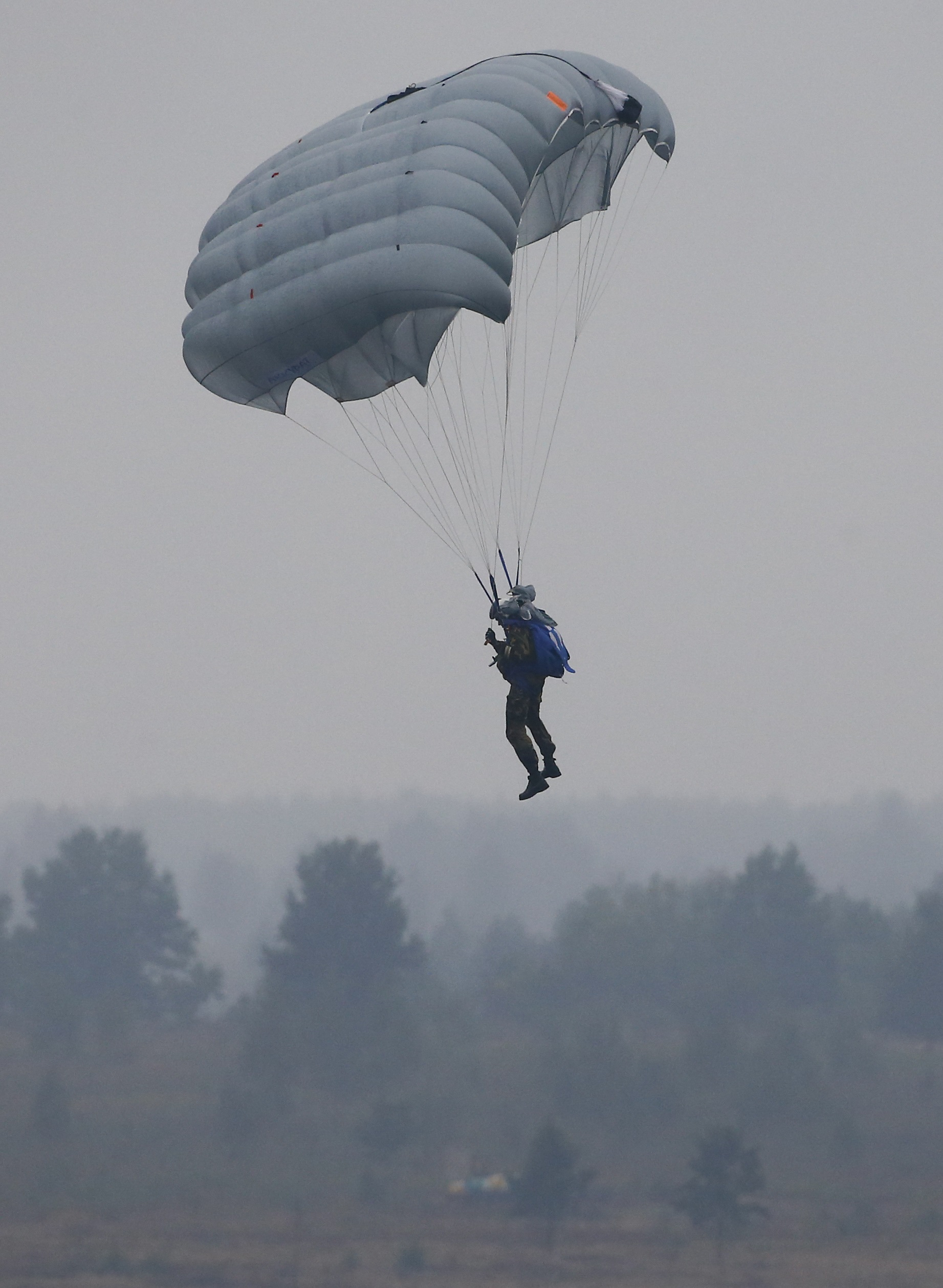
MOSCOW (Reuters) – President Vladimir Putin arrived at a remote army training ground on Monday to watch a military parachute drop, part of Russia’s biggest war games since 2013 that have the West looking on nervously.
NATO officials say they are watching the “Zapad-2017” (“West-2017”) war games with “calm and confidence”, but many are unnerved about what they see as Moscow testing its ability to wage war against the West. Russia says the exercise is rehearsing a purely defensive scenario.

A parachuter descends before landing at a firing range during the Zapad-2017 war games, held by Russian and Belarussian servicemen, outside the town of Ruzhany in Belarus, September 17, 2017. REUTERS/Vasily Fedosenko
The Russian Defence Ministry said Monday’s parachute drop, at a military facility in the Leningrad region, would see 450 paratroopers and nine armored vehicles dropped from military transport planes, a show of military might that is likely to be heavily covered on state TV.
Putin, commander-in-chief of Russia’s armed forces, has often appeared at such events in the past, using them to bolster his image among Russians as a robust defender of the country’s national interests on the world stage.
The Russian leader, 64, has not yet said whether he will run for what would be a fourth presidential term in March, but is widely expected to do so.
Once the paratroopers and their vehicles have landed behind the lines of their simulated enemy, their task will be to wage war against what the defense ministry in a statement called “illegal armed formations” and to destroy their opponents’ vital infrastructure and command centers.

A Belarussian Mi-8 helicopter flies above a firing range during the Zapad-2017 war games, held by Russian and Belarussian servicemen, outside the town of Ruzhany in Belarus, September 17, 2017. REUTERS/Vasily Fedosenko
The over-arching Zapad war games run to Sept. 20 and are taking place in Belarus, western Russia and Russia’s exclave of Kaliningrad.
Moscow says almost 13,000 Russian and Belorussian service personnel are taking part, as well as around 70 planes and helicopters. Almost 700 pieces of military hardware are being deployed, including almost 250 tanks, 10 ships and various artillery and rocket systems.
(Reporting by Andrew Osborn; Editing by Janet Lawrence)

